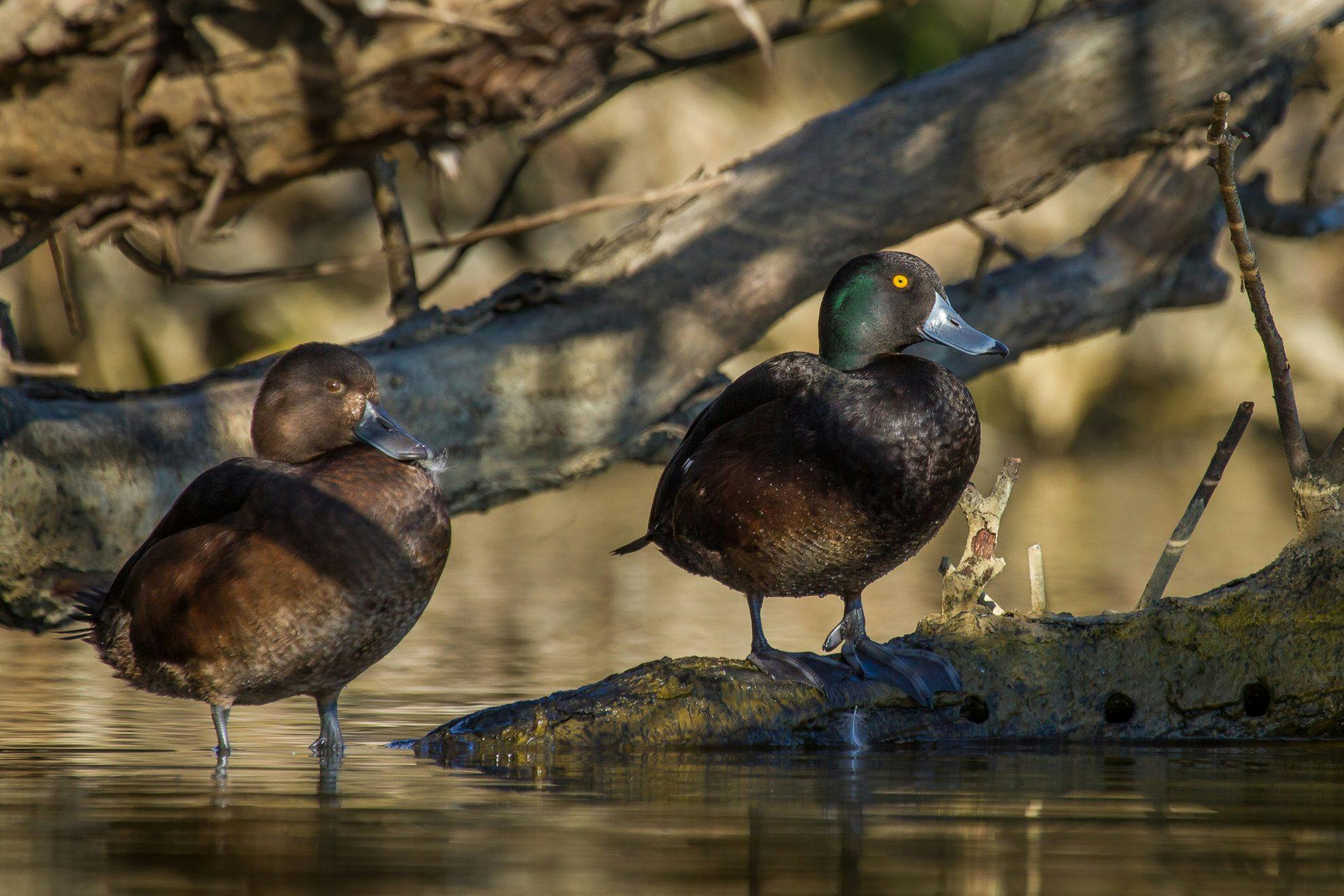A duck that spends much of its time beneath the water, not on it.
The New Zealand scaup (pāpango) is the only diving duck in New Zealand. It spends a lot of time underwater and can dive to a depth of up to three metres and travel considerable distances while down.
Conservation status: Endemic (occurring only in New Zealand) species classified as ‘not threatened’.
Features: I once read scaup described as having ‘the silhouette of a toy bath duck’ and indeed, it is a relatively small, dark-coloured duck with an overall ‘squat’ profile. The male has very dark black-brown plumage with an iridescent blue-green head and wings and some very light mottling on the chest. His most distinctive feature is a bright yellow iris that stands out like a beacon against the dark feathering. The female is a duller chocolate brown, is much paler on the underparts and has plain brown eyes. Both sexes have grey bills. Juvenile scaup look like females until about 12 weeks when the males develop the yellow iris.
Call: The male scaup has a high-pitched whistle sounding like ‘weeee weo-weo weo’ and the female emits a low and quiet ‘wack wack’.
Diet: They obtain pretty much all of their food by diving underwater. Prey includes, snails, insect larvae and other invertebrates supplemented on occasion by plant material.
Nesting: The nest is made on the ground, close to water and well hidden. Often it will be completely covered and it is not uncommon for scaup to have a tunnel leading to a concealed chamber. The breeding season falls between October and March. They’re usually gregarious birds, but during the breeding season mating pairs prefer to be more solitary. The female does pretty much all of the incubating, rearing and feeding. A normal clutch size is six or seven and young birds fledge at 75 days.
Bird spotting tip: New Zealand scaup are present on both main islands in a wide but patchy distribution. Their preferred habitat is large, deep, freshwater lakes either natural or manmade such as the South Island hydro lakes. However, they are becoming more common on shallower lowland lakes, slower flowing rivers and in saltwater areas like tidal estuaries. They often gather together in sheltered areas near willow trees or reedbeds, moving around as the wind direction dictates.
Feathery fact: Male scaup have a range of courtship behaviours that include the ‘sneak’ (neck extended horizontally), ‘head-flicks’ (rapid upwards head and bill movement) and ‘kink-neck’ (neck held at unusual angles).








